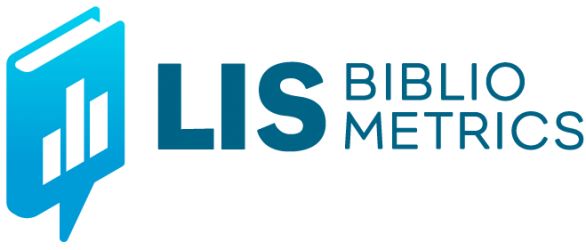A selection of books, journal articles, blog posts and reports on topics relevant to bibliometric practice.
Books
- Measuring Research: what everyone needs to know. Sugimoto, C. & Lariviere, V. (2018). Oxford University Press. A good introductory primer on all things bibliometrics. See the full review on The Bibliomagician.
- Beyond Bibliometrics : Harnessing Multidimensional Indicators of Scholarly Impact. Cronin, B. & Sugimoto, C. (Eds). (2014). Massaschussets, MIT Press. This book describes recent theoretical and practical advances in metrics-based research, examining a variety of alternative metrics—or “altmetrics”—while also considering the ethical and cultural consequences of relying on metrics to assess the quality of scholarship.
- Research assessment in the humanities: towards criteria and procedures. Ochsner, M., Hug, S. E., & Daniel, H. D. (2016). Open access book which analyses and discusses the recent developments for assessing research quality in the humanities and related fields in the social sciences.
- Altmetrics: a practical guide for librarians, researchers and academics. Tattersall, A. (2016). London: Facet Publishing. An overview of altmetrics, its tools and how to implement them successfully to boost and measure research outputs.
- Gaming the Metrics: Misconduct and Manipulation in Academic Research. Ed. Biagioli, M and Lippman, A. (2020). Open Access collection on topics exploring metric gaming and other issues facing academic publishing.
Reports
- Bibliometrics for Research Management and Research Evaluation – A Brief Introduction. In this free report, CWTS brings together essential information about the use of bibliometrics in research management and research evaluation. This report is intended for anyone with a professional interest in the application of bibliometrics in a research management and research evaluation context.
- The Metric Tide: Report of the Independent Review of the Role of Metrics in Research Assessment and Management by Higher Education Funding Council for England (HEFCE)(2015). Published in July 2015, The Metric Tide is the seminal report which has informed much of the knowledge, understanding and subsequent development of bibliometrics and alt-metrics.
- The Supplementary Report to the Metric Tide Provides a detailed analysis of the correlation between Research Excellence Framework (REF) results and metrics.
- Development of bibliometric indicators to measure women’s contribution to scientific publications details methodology to to determine the probability of an author being female or male, permitting analysis of the distribution of female authors across academic disciplines in the United States.
- Why Do Measures Fluctuate? Metrics Report – Guidelines for Talking to Management by Sarah Slowe and Hardy Schwamm is a LIBER report that provides guidance for discussing metrics with senior management in an institutional setting.
Journal Articles
- MacDonald, K.I., Dressler, V., 2018, Using Citation Analysis to Identify Research Fronts: A Case Study with the Internet of Things. Science and Technology Libraries, pp. 1-16. Article in Press.
- Costas, R., Zahedi, Z. & Wouters, P., 2013. Do altmetrics correlate with citations? Journal of the Association for Information Science and Technology , 2014, pp.1–30.
- Erikson, M.G. & Erlandson, P., 2014. A taxonomy of motives to cite. Social Studies of Science, 44, pp.625–637. Available at: http://sss.sagepub.com/cgi/doi/10.1177/0306312714522871.
- Gunashekar, S. et al., 2004. Bilbliometric analysis of highly cited publications of biomedical and health research in England, 2004-2013.
- Hill, S., 2015. Dimensions of quality research. Available at: http://blog.hefce.ac.uk/2015/07/27/dimensions-of-quality-research/.
- Jump, P., 2015. Metrics: how to handle them responsibly. Times Higher Education, 9 July. Available at: https://www.timeshighereducation.com/features/metrics-how-to-handle-them-responsibly
- Kulkarni, A. V., Busse, J.W. & Shams, I., 2007. Characteristics associated with citation rate of the medical literature. PLoS ONE, 2(5), pp.1–5.
- Long, J.S., 1992. Measures of sex differences in scientific productivity. Social Forces, 71(1), pp.159–178.
- Ovseiko, P. V. et al., 2016. A global call for action to include gender in research impact assessment. Health Research Policy and Systems 2016 14:1, 14(1), pp.156–65. Available at: http://dx.doi.org/10.1186/s12961-016-0126-z.
- Priem, J., Piwowar, H. a & Hemminger, B.M., 2012. Altmetrics in the wild: Using social media to explore scholarly impact. arXiv12034745v1 csDL 20 Mar 2012, 1203.4745, pp.1–23. Available at: http://arxiv.org/abs/1203.4745\nhttp://arxiv.org/abs/1203.4745v1..
- Smart, J.C. & Bayer, a. E., 1986. Author collaboration and impact: A note on citation rates of single and multiple authored articles. Scientometrics, 10(5-6), pp.297–305.
- Symonds, M.R.E. et al., 2006. Gender differences in publication output: Towards an unbiased metric of research performance. PLoS ONE, 1(1), pp.1–5.
- Thelwall, M. et al., 2013. Do Altmetrics Work? Twitter and Ten Other Social Web Services. PLoS ONE, 8(5), pp.1–7.
- Petersohn, S. (2016). Professional competencies and jurisdictional claims in evaluative bibliometrics: the educational mandate of academic librarians, Education for Information, 32, 165-193
- Do females create higher impact research? Scopus citations and Mendeley readers for articles from five countries. Thelwall, et al., 2018. https://arxiv.org/abs/1808.03296
- Gender differences in research areas and topics: An analysis of publications in 285 fields. Thelwall, et al., 2018. https://arxiv.org/abs/1809.01255
Other Resources
- Delasalle, J. (2016). Librarian quick reference cards for research impact metrics. Retrieved from https://libraryconnect.elsevier.com/metrics. A poster and set of cards presenting definitions of a range of metric.
- Metrics Toolkit. Retrieved from https://www.metrics-toolkit.org/. Provides guidance on the definitions of a wide range of metrics as well as suggesting appropriate and inappropriate uses for each.
The resources on this web page were originally kindly developed by Maria J Grant, Centre for Applied Research in Health, Welfare and Policy, University of Salford. http://www.seek.salford.ac.uk/profiles/MGRANT.jsp
To suggest new resources to add to this page please email the editors.
